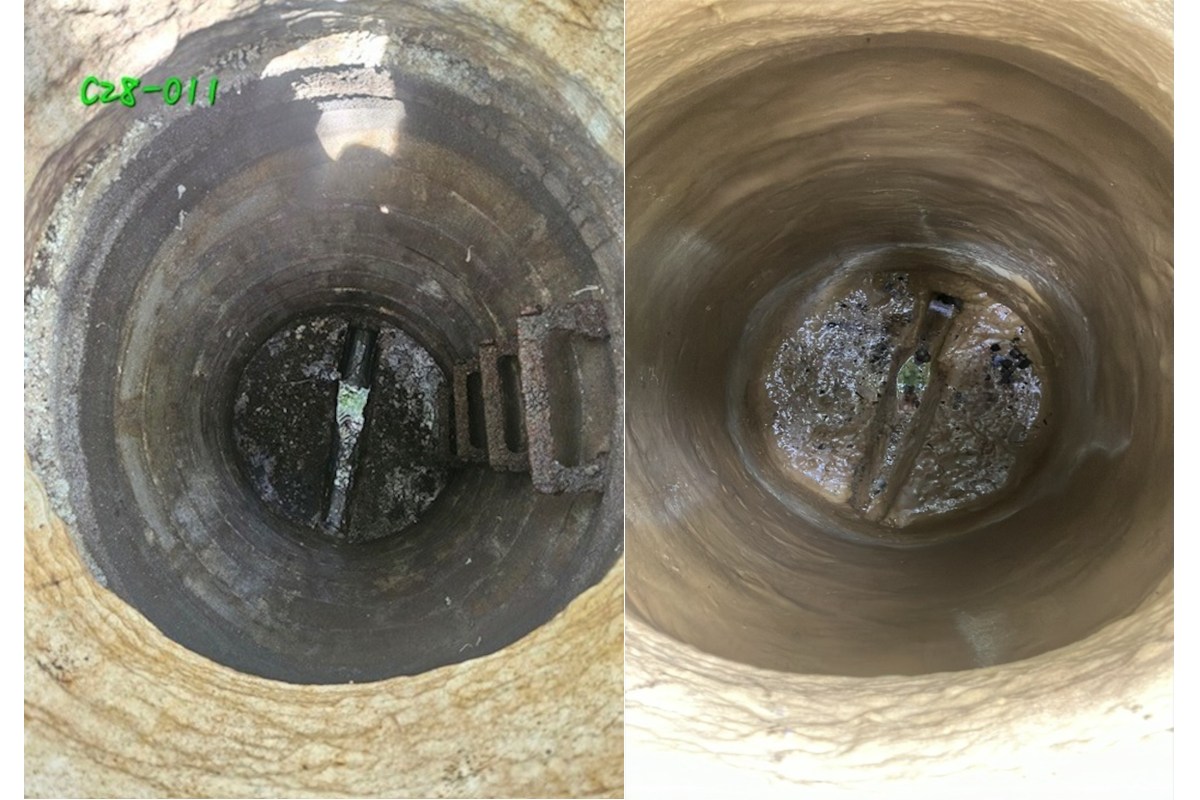
Warsaw, Indiana Tackles Sewer Assessments In-House
Warsaw Wastewater Utility Department Adopts Aggressive Schedule to Get a Better Handle on Its Collection System
When Brian Davison and Larry Hyden joined the Wastewater Utility Department for the City of Warsaw, Indiana, they knew there were problems with the system, they just didn’t know how many.
Davison, the utility’s manager and Hyden, the assistant manager, first tackled the City’s treatment facilities and lift stations bringing them up to standard and then began to look at the collection system with vigor. The utility serves 5,500 customers and processes 3.9 million gallons per day. There is roughly 86 miles of aggregate, clay, brick and PVC pipe underground and much of it installed at the turn of the 20th century.
As they focused on bringing the treatment facility and lift stations up to standard, the department relied on outside contractors to tackle problems on the sewer lines themselves.
“We were contracting the work at first, but we realized that it was too expensive,” Hyden says. “We were spending about $1,000 for a half-day and that prompted us to start looking at the options available on the market.”
After talking to a sales rep at Jack Doheny Companies, the City purchased a portable camera system and a sewer cleaner truck to address problem areas along the pipeline as they came up. That was in 2007. Two years later, the department realized it needed a dedicated camera truck, so it built one in-house around the portable system.
RELATED: Manhole Inspections: An Important Step in Holistic Sewer System Health
With a city engineer onboard, the department was able to take the camera data the crews collected onsite back to the office and “unzip” the pipe and see the some of the defects. According to Davison, it was at this time that they began noticing how poor the condition of the collection system actually was. “We knew we had to get aggressive about what we had underground and the condition that it was in,” Davison recalls.
After looking first at hiring a contractor to assess the entire storm and sanitary systems — quotes came in at $1 million — the department looked into adding a combination sewer cleaner and camera truck to its fleet. Ultimately, the decision was made to purchase a RapidView IBAK North America Panoramo 2 camera system.
“Ultimately, the advantage with IBAK is that they are in our own backyard — about 45 minutes away — if we need repairs or service,” Davison says. “It was more than the camera it was the service and the support that was important to us.”
The plan from the outset was to assess the system and assign a PACP rating to the pipe. The initial plan was to get through the system in three years, but in reality, it took the City four years due to other utility duties and staffing changes among the eight-person maintenance crew. In all, the department averaged 110,000 lf per year.
“We had our eyes opened about the actual condition of our system,” Hyden says. “Through the program, we learned that most of the 1899-pipe is still in good condition, but the joint seals have failed, causing sinkholes in the streets. Some areas also have a significant amount of infiltration.”
Hyden and Davison attribute the joint seal failure to heavy hydrogen sulfide damage to the joints. When the combo truck went through, it washed the joints away. “We began experimenting with different nozzles and cleaning techniques so we learned how to operate the trucks more efficiently,” Davison says.
RELATED: Contractor Profile: Great Lakes TV Seal Inc.
With the system assessed, the next step is the renewal or replacement of the aging infrastructure. In 2017, the City of Warsaw put a $9.5 million lining and repair project out to bid. This project tackles 80,000 lf of the PACP Grade 5 areas in the 1899 sewers. Divided into four contracts, work is slated for completion in 2018 and will cover two small diameter (15 in. or less) relining projects, one large diameter (18 in. and larger) relining project and one replacement contract to upgrade all of the 4- and 6-in. diameter pipe to 8 in.
“Our entire system is working a lot more efficiently now,” says Dale Walter, system coordinator. “Our sewer calls are way down and everything is working a lot better.”
Hyden adds that since employing the IBAK camera and sewer cleaner truck on a nearly-daily basis the system conveys more water, there are less combined sewer overflows and there are less calls for backups and sewer-related problems on the city-owned side of the system.
“We’ve increased our annual budget for the collection system to start working on other areas to focus on the [PACP] 4s and 3s,” Davison says. “We are trying to be more proactive with our collection system and get ahead of problems.”
The department has no plans on stopping.

After working with a portable camera and an in-house built camera truck, the Wastewater Utility Department began to see the advantages of being able to complete the camera work and subsequent assessments with their own staffing.
The crews are in the process of assessing and addressing problems at the 6,000 manhole structures using the Panoramo SI 3D Optical Manhole Scanner. The department is in the preliminary steps of reassessing the PACP Grade 4 sections and working its way back through the sanitary system based on those grades. There is also talk that the maintenance crews will also start working on the 60 miles of storm lines.
RELATED: Product Profile: Panoramo SI 360 Manhole Scanner
On the horizon is an upgrade of the 2007 portable system and the in-house built camera truck, which Hyden notes is getting to the point where it will no longer be supported, the addition of a lateral launch camera, as well as a move to a newer high definition camera.




